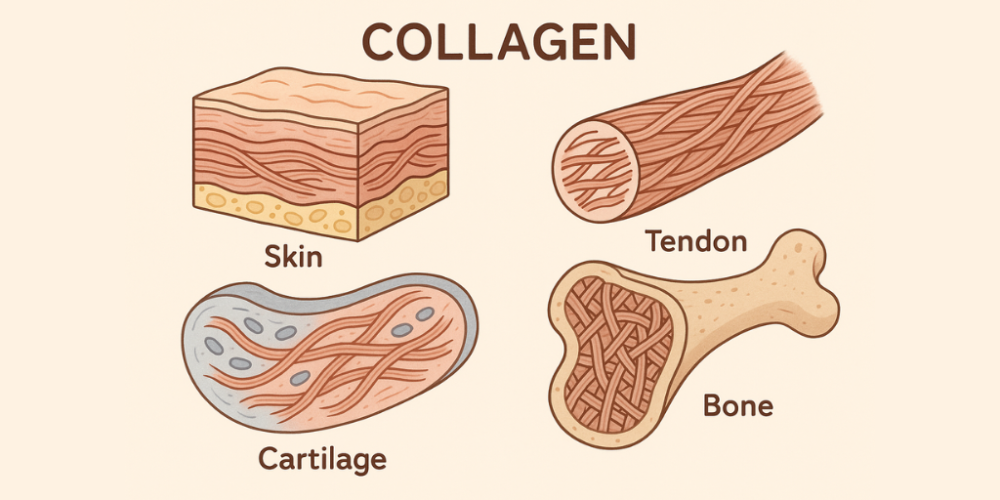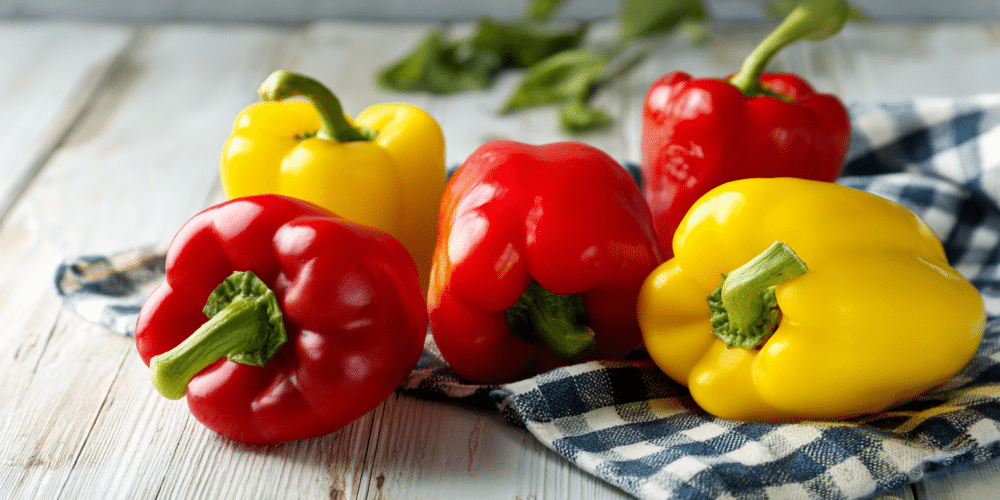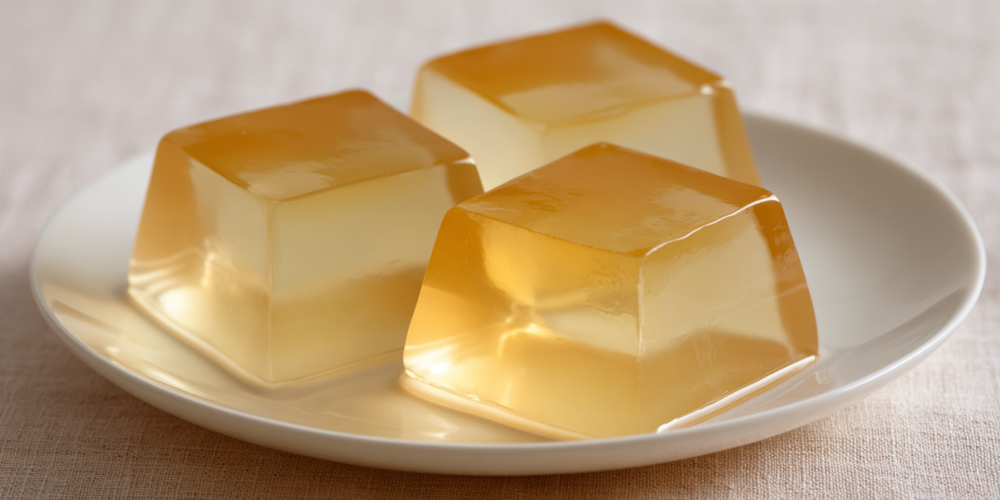
Today, I’m going to talk about a protein that you absolutely need to know about: collagen. If you’re someone who has always wanted strong, youthful, radiant skin, and you also care about having flexible, pain-free joints, then you need to understand that boosting your collagen is incredibly important. It’s the key to a resilient body that ages gracefully. I’m going to show you the best foods and lifestyle habits to help you repair and fortify your body’s collagen from the inside out, so you can truly thrive.
You’ve probably heard about collagen in beauty products or maybe even associated it with puffy lip injections, which might have turned you off. But collagen is so much more than a cosmetic buzzword. It is a natural protein that plays a fundamental role in keeping your body strong, resilient, and able to heal itself. It’s the literal glue that holds you together, and as we age, our natural production of this vital protein declines. The good news is that you have the power to support your body’s collagen levels through what you eat. Let’s dive in.
Key Takeaways
- Collagen is the body’s most abundant protein, acting as the structural “glue” or scaffolding for your skin, bones, muscles, and joints.
- Your body’s natural collagen production begins to slow down after age 25, leading to common signs of aging like wrinkles, sagging skin, and joint pain.
- Eating collagen doesn’t directly add it to your joints or skin. Instead, your body breaks it down into fragments that signal your own cells to produce more collagen where it’s needed.
- Key nutrients are essential for this process. Vitamin C is a required co-factor for collagen synthesis, while sulfur helps strengthen its structure.
- You can significantly boost your collagen by consistently including specific foods in your diet, such as bone broth, vitamin C-rich fruits, and sulfur-rich leafy greens.
1. What Exactly Is Collagen and Why Should You Care?

Collagen is the most abundant protein in your body, making up about 30% of your total protein content. Think of it as the scaffolding that holds your tissues and organs together, providing structure and tensile strength, much like the iron rods inside the walls of a building. The word itself comes from the Greek word “kola,” which literally means glue. Without enough of this crucial protein, your body’s structures weaken and begin to fall apart. This is precisely what happens as we age.
Sagging skin, aching joints, and slow wound healing are all classic signs of declining collagen levels. When you were a kid, a small cut would heal in no time. But as you get into your 50s, 60s, and beyond, you’ll notice that same type of wound heals much more slowly. This is, in large part, due to lower collagen levels. While your body produces collagen throughout your life, studies show that production starts to slow down around age 25. You may not notice it then, but by middle age, the breakdown of existing collagen starts to outpace new production, and the effects become more apparent. This isn’t just about skin; it affects your entire body. Collagen is found in your eyes (the cornea is made of perfectly aligned collagen), your 60,000 miles of blood vessels, the valves and structure of your heart, and even the cushioning discs in your spine that prevent back pain.
2. How Eating Collagen Actually Works (It’s Not What You Think!)
For a long time, I was skeptical about the idea of eating collagen. How could a protein you eat survive your stomach acid and end up in your joints? Well, it doesn’t work that way. When you eat collagen, whether from food or a supplement, your stomach acid digests it and chops it up into smaller pieces called collagen fragments. These fragments, along with individual amino acids, are then absorbed into your bloodstream.
Here’s the amazing part: these collagen fragments are biologically active. They circulate throughout your body and act as signaling molecules. They essentially knock on the door of your cells—specifically cells called fibroblasts—and stimulate them to produce more of your own natural collagen. So, you’re not directly transplanting collagen; you’re providing the messengers that tell your body to ramp up its own production. At the same time, the amino acids released during digestion (like glycine and proline) provide the raw building blocks your body needs to construct that new collagen. This is how eating collagen-rich foods can directly benefit your skin, hair, muscles, and joints.
3. Food #1: Power Up with Vitamin C

If you want your body to build collagen, you must give it the right tools, and one of the most critical tools is Vitamin C. Vitamin C is an essential co-factor for the enzymes that synthesize collagen. Think of it as the grease for your body’s collagen-making machinery. Without enough Vitamin C, the process grinds to a halt. Studies show that people who regularly consume foods high in Vitamin C have better skin elasticity and heal their wounds faster.
A study in the American Journal of Clinical Nutrition found that women with a higher intake of Vitamin C were 11% less likely to have a wrinkled appearance and 17% less likely to experience skin dryness. The best way to get your Vitamin C is by loading your plate with colorful fruits and vegetables. Some of my top picks include:
- Strawberries
- Tomatoes
- Bell Peppers (red, yellow, or green)
- Broccoli
- Kiwi
- Cantaloupe
- Pineapple
Try to incorporate one or more of these into your diet every single day. Consistency is the key when you’re using food for your health. Beyond building collagen, Vitamin C is also a potent antioxidant that protects the collagen you already have from being damaged by free radicals from pollution and UV radiation.
4. Food #2: The Ancient Wisdom of Bone Broth

Bone broth is a trend you see everywhere, but its power isn’t new. It’s an ancient tradition found in almost every culture for a reason: it’s incredibly healthy. Bone broth is one of the best food sources of collagen. It’s made by simmering the leftover bones, carcasses, and joints of chicken, beef, or pork for many hours.
This long, slow simmering process breaks down the cartilage and bones, causing the collagen and its amino acids to dissolve directly into the broth. This creates a nutrient-rich liquid packed with glycine, proline, and other building blocks for your body. This is why your grandmother probably told you to have chicken soup when you were sick; it’s deeply nutritious and healing. There’s strong clinical evidence to back this up. A study at Washington State University gave elderly people with osteoarthritis a collagen supplement derived from chicken bones. The results showed a significant decrease in their joint pain. You can easily make bone broth at home by putting leftover bones in a pot, covering them with water, adding some vegetables like carrots and onions for flavor, and letting it simmer for hours. This hydrating, collagen-rich broth is fantastic for your joints, skin, and even your gut health.
5. Food #3: Go Green with Sulfur-Rich Vegetables

We all know leafy greens are good for us, but some are particularly beneficial for collagen production. Sulfur-rich vegetables, like those in the brassica family, play a unique role. Remember how collagen is formed from three protein chains twisted into a strong triple helix? Sulfur acts like a clip that helps stabilize and strengthen that helix, preventing it from breaking down.
Furthermore, leafy greens like spinach and kale are excellent sources of Vitamin A, which has been shown to stimulate new collagen production, especially in aging skin. So, by eating these greens, you’re not only strengthening existing collagen but also triggering the creation of new collagen. Some of the best sulfur-rich vegetables to add to your diet include:
- Broccoli (don’t throw away the stem—it’s packed with nutrients!)
- Kale
- Spinach
- Onions
- Garlic
These foods also help lower inflammation and feed your healthy gut bacteria, providing a wide range of health benefits beyond just collagen support. Studies have even shown that women who regularly eat leafy greens tend to have fewer wrinkles. So, find ways to cook these vegetables that you truly enjoy.
6. Food #4: The Surprising Power of Gelatin

Remember that jiggly Jell-O you ate as a kid? That’s made from gelatin, which is essentially just cooked collagen. It’s produced by boiling down the skin, bones, and ligaments from animals, just like bone broth, but it’s then processed into a flavorless, colorless powder. This powder is loaded with the same amino acids and collagen fragments that stimulate your body’s own production.
The evidence for gelatin’s effectiveness on joint health is compelling. A clinical study from Penn State University looked at 97 athletes who had significant joint pain from their sports. For 24 weeks, half the group was given gelatin, while the other half received a placebo. The group that received the gelatin experienced a remarkable 37% decrease in their joint pain. This shows that providing your body with these building blocks can have a direct, measurable impact on reducing pain and improving joint function. You can easily incorporate gelatin powder into your diet by dissolving it in hot liquids, adding it to smoothies, or using it to make healthy gummies or desserts.
Conclusion
Supporting your body’s collagen isn’t about expensive creams or cosmetic procedures; it’s about nourishing your body from the inside out. By understanding that collagen is the fundamental protein for your body’s structure and resilience, you can take simple, powerful steps to protect and rebuild it. Consistently incorporating foods rich in Vitamin C, sulfur, and natural collagen—like citrus fruits, leafy greens, bone broth, and gelatin—provides your body with both the building blocks and the signals it needs to stay strong, flexible, and youthful. You have the ability to influence how your body ages, and it starts with the food you put on your plate.

